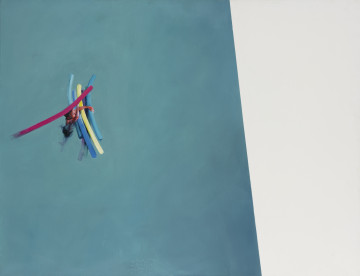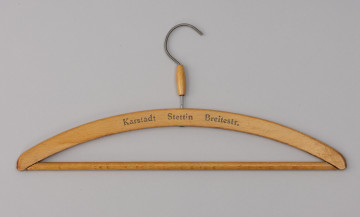
untitled
2010
National Museum in Szczecin
Part of the collection: Folk ceramics
In the second half of the 16th century, attention was drawn to the therapeutic qualities of the mineral waters, which included springs of bitter water from the vicinity of Zaječice, Sedlec and Korozluky and from the now-defunct village of Bylany in North Bohemia. The strongly bitter-tasting, odourless, hypertonic and yellowish water there, mineralised with magnesium sulphate, has been extracted from the original springs since 1717. It is recommended for people with intestinal, liver and gallbladder ailments and those suffering from constipation and haemorrhoids. Baths using it were thought to rejuvenate and purify the skin. It is also an excellent source of magnesium. As early as the 18th century, it was the equivalent and competitor of the most famous, considered medicinal, Epsom salt. Since then, it has been distributed under various trademarks to many world markets. Suitable containers were needed for the, often distant, transport. Mineral water from North Bohemia, now known as Zaječická hořká, was poured into stoneware bottles with cork or tin lids from the 18th century until the early 20th century. Hundreds of thousands of vessels similar to the one on display were probably produced, because they were treated like the plastic bottles we use today, i.e. disposable. Depending on the manager or owner of a particular spring, who changed over time, the bottles were marked with different stamps. The museum copy bears the mark PILLNAER BITTER WASSER, with A. below. ULBRICH. The name probably refers to the person Adalbert Ulbrich, who founded the Pillnaer Bitterwaser company around 1820. Under the direction of his son Anton in the 1970s and 1980s. During the 19th century, the company gained recognition at world exhibitions in Europe, the United States and Australia. Iwona Karwowska
Author / creator
Object type
bottle
Technique
throwing (pottery technique), glazing
Material
stoneware
Origin / acquisition method
donation
Creation time / dating
Creation / finding place
Owner
Muzeum Narodowe w Szczecinie
Identification number
Location / status

2010
National Museum in Szczecin

circa 1927 — 1943
National Museum in Szczecin

1916 — 1945
National Museum in Szczecin
DISCOVER this TOPIC
National Museum in Lublin
DISCOVER this PATH
Educational path